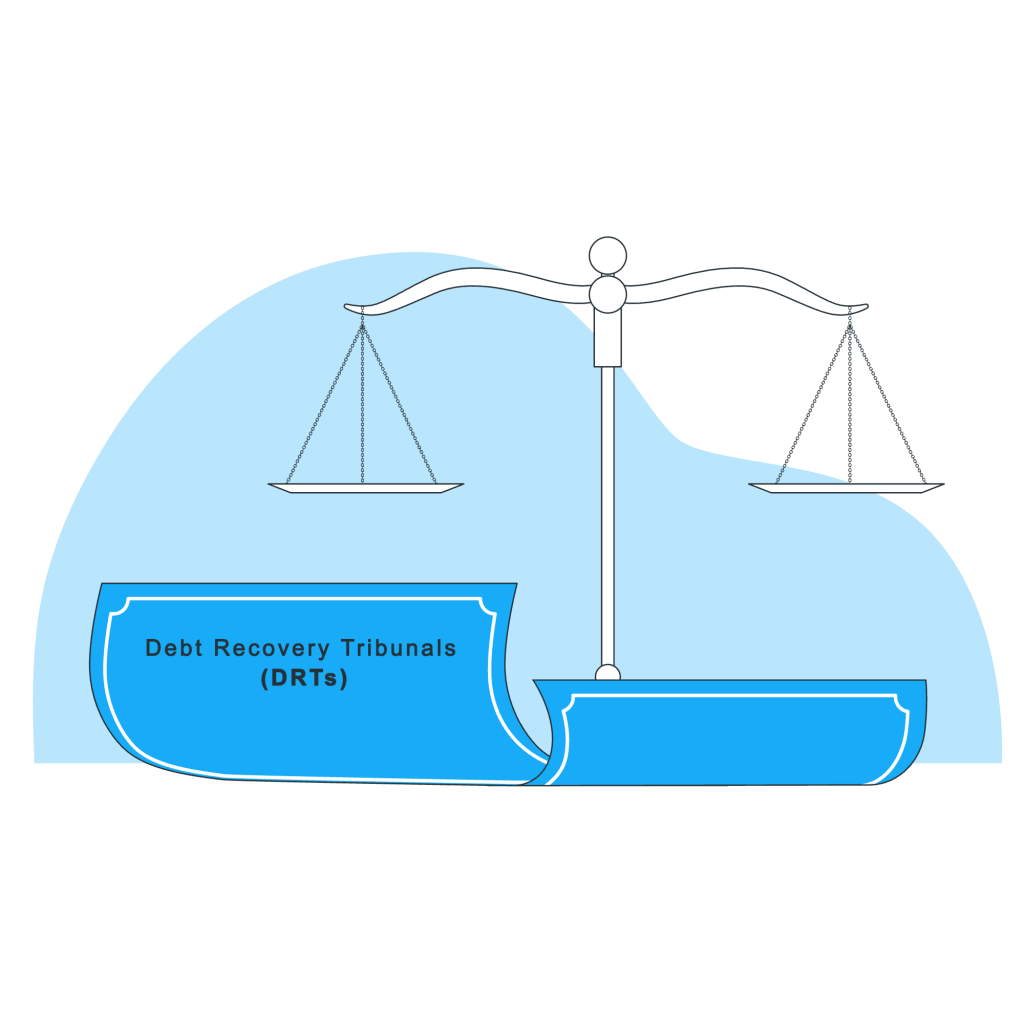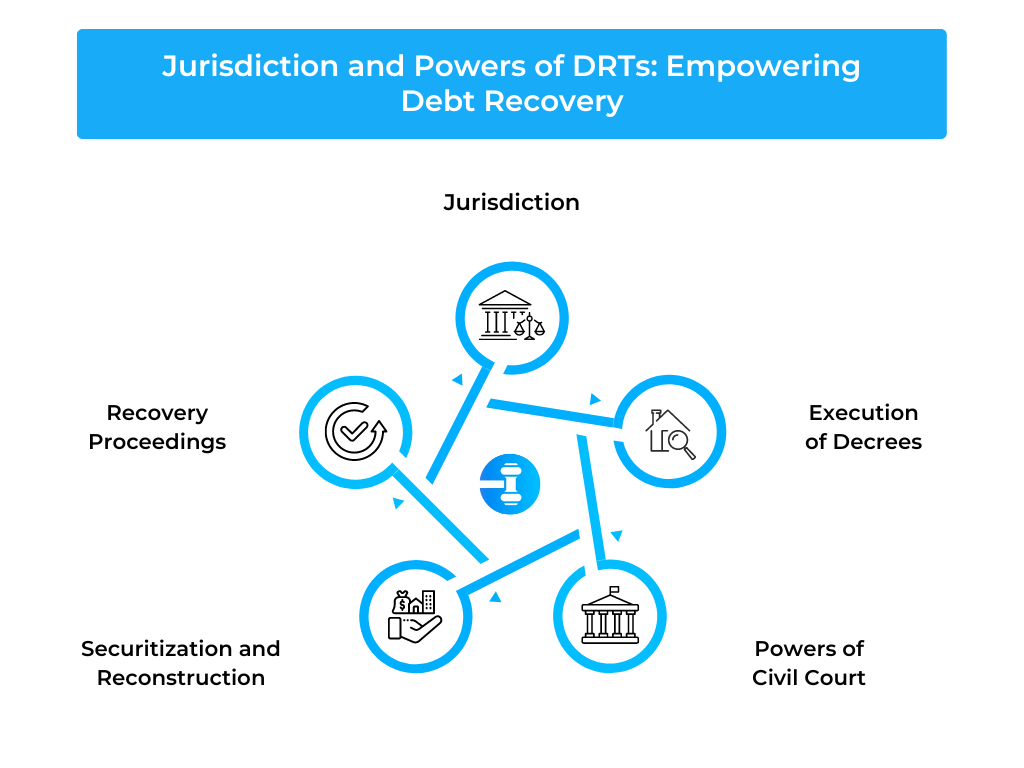Unraveling the Mechanisms of Debt Recovery Tribunals: A Comprehensive Guide
Introduction: An Overview of Debt Recovery Tribunals (DRTs)

Debt Recovery Tribunals (DRTs) play a crucial role in the legal framework of debt recovery in many countries. These specialized tribunals are established to provide an efficient and expedited mechanism for the recovery of debts, particularly those involving banks and financial institutions. DRTs are designed to resolve disputes related to the recovery of non-performing assets (NPAs) and provide a fair and transparent platform for both creditors and debtors.
In essence, DRTs serve as quasi-judicial bodies with the primary objective of expediting the recovery of outstanding debts. They operate independently of regular civil courts and are governed by specific legislation pertaining to debt recovery. The establishment of DRTs aims to streamline the debt recovery process, reduce the burden on regular courts, and provide specialized expertise in dealing with complex financial matters.
DRTs have the authority to hear and adjudicate cases involving defaulted loans, mortgage-related disputes, asset reconstruction, and other matters related to debt recovery. Their decisions have legal binding and enforceable consequences, ensuring that the recovery process is carried out effectively. By providing a dedicated forum for debt-related disputes, DRTs contribute to maintaining financial stability and fostering a conducive environment for lending institutions and borrowers alike.
Jurisdiction and Powers of DRTs: Empowering Debt Recovery

Debt Recovery Tribunals (DRTs) are vested with specific jurisdiction and powers that empower them to effectively handle and resolve debt-related disputes. Understanding the jurisdiction and powers of DRTs is crucial for both creditors seeking to recover their dues and debtors seeking a fair resolution. Here are some key aspects regarding the jurisdiction and powers of DRTs:
Jurisdiction: DRTs have jurisdiction over cases involving the recovery of debts exceeding a specified threshold, as determined by the applicable legislation. Typically, DRTs handle cases involving banks, financial institutions, and other specified entities. They have the authority to entertain cases related to non-performing assets (NPAs), loan defaults, mortgages, guarantees, and other debt-related matters falling within their jurisdiction.
Recovery Proceedings: DRTs have the power to initiate and conduct recovery proceedings upon the filing of an application by the creditor. The proceedings involve examining the validity of the debt, determining the liability of the debtor, and facilitating the recovery process. DRTs can issue recovery certificates and take necessary actions to enforce the recovery of the outstanding debt.
Securitization and Reconstruction: DRTs also possess jurisdiction over cases related to the securitization and reconstruction of financial assets. They have the authority to determine the legality of such transactions and resolve disputes arising from them. This jurisdiction empowers DRTs to handle complex cases involving the restructuring and resolution of distressed assets.
Powers of Civil Court: DRTs are conferred with certain powers of a civil court, including the ability to summon witnesses, examine them under oath, and compel the production of documents. This grants them the necessary authority to thoroughly investigate cases and make informed decisions.
Execution of Decrees: DRTs have the power to execute the decrees and orders issued by them. They can take measures to attach and sell properties, impose liens, and exercise other enforcement mechanisms to ensure the recovery of the debt.
Composition and Structure of DRTs: Key Players and Stakeholders
The composition and structure of Debt Recovery Tribunals (DRTs) are designed to ensure fair and efficient proceedings in the debt recovery process. Understanding the key players and stakeholders involved in DRTs is essential for parties involved in debt-related disputes. Here are the important components of the composition and structure of DRTs:
Presiding Officer: Each DRT is headed by a Presiding Officer who possesses judicial qualifications and experience. The Presiding Officer plays a crucial role in overseeing the proceedings, making decisions, and ensuring the adherence to legal principles.
Members: DRTs may have one or more members, depending on the volume of cases and workload. Members are typically experienced legal professionals who assist the Presiding Officer in conducting the proceedings, examining evidence, and rendering judgments.
Registry: The Registry of the DRT handles administrative tasks, record-keeping, and case management. It is responsible for maintaining case files, scheduling hearings, issuing notices, and other administrative functions necessary for the smooth functioning of the tribunal.
Appellate Authority: In some jurisdictions, there exists an Appellate Authority for DRTs, commonly known as the Debts Recovery Appellate Tribunal (DRAT). The DRAT acts as an appellate body to hear appeals against the decisions of DRTs. It provides an avenue for parties dissatisfied with the DRT’s ruling to seek redress and review of the judgment.
Creditors: Creditors, including banks, financial institutions, and other lending entities, play a vital role as stakeholders in DRT proceedings. They initiate the debt recovery process by filing applications before the DRT, presenting evidence, and seeking the recovery of their outstanding dues.
Debtors: Debtors, the individuals or entities who owe the debts, are the other key stakeholders involved in DRT proceedings. They have the right to present their case, challenge the claims made by the creditors, produce evidence, and seek a fair resolution of the debt-related dispute.
Legal Counsels: Legal counsels, representing both creditors and debtors, play an important role in presenting arguments, examining witnesses, and advocating for their respective clients’ interests. They provide legal guidance and representation throughout the proceedings.
Initiating Debt Recovery: Filing a Case with DRTs
When creditors need to initiate the process of debt recovery through Debt Recovery Tribunals (DRTs), they must file a case with the respective DRT. Filing a case with DRTs involves submitting an application, commonly known as a “Original Application” or “OA,” along with the necessary supporting documents.
The application typically includes details such as the creditor’s name, address, and contact information, as well as the debtor’s information. It should provide a comprehensive account of the outstanding debt, including the principal amount, interest accrued, and any other charges or penalties involved. Additionally, the application should outline the grounds for the debt recovery and any supporting evidence available, such as loan agreements, promissory notes, or collateral documentation.
Once the case is filed, the DRT examines the application and verifies its compliance with the prescribed format and requirements. If the application is found to be in order, the DRT issues notices to the debtor, informing them about the case and the need to respond within a specified timeframe. This ensures that the debtor has an opportunity to present their side of the case and provide any relevant information or defenses.
Filing a case with DRTs is a critical step in the debt recovery process as it officially initiates the legal proceedings and sets the stage for further actions, including hearings, evidence examination, and final adjudication. It provides creditors with a legal platform to assert their rights and seek recovery of their outstanding dues through the specialized jurisdiction and powers of the DRT.
DRT Proceedings: Adjudication and Decision-Making Process
DRT proceedings encompass the adjudication and decision-making process through which debt-related disputes are resolved. These proceedings take place within Debt Recovery Tribunals (DRTs) and involve several key steps:
Preliminary Hearing: After the filing of the case, the DRT conducts a preliminary hearing to assess the validity and jurisdiction of the matter. The presiding officer may examine the application, supporting documents, and any responses from the debtor to determine the admissibility of the case.
Summoning and Examination: The DRT has the authority to summon witnesses and examine them under oath. Both the creditor and debtor have the opportunity to present their evidence, documents, and witnesses to support their respective claims or defenses. Cross-examination may occur to test the veracity and credibility of the presented evidence.
Arguments and Submissions: Once the evidence is presented, the parties have the chance to make their arguments and submissions before the DRT. Legal counsels representing the creditor and debtor put forth their perspectives, interpret the evidence, and present legal arguments to support their respective positions.
Case Evaluation and Decision: The DRT evaluates the evidence, documents, and legal arguments presented by both parties. It considers applicable laws, precedents, and relevant provisions to arrive at a decision. The decision of the DRT is typically in the form of a written order or judgment, specifying the findings, reasons, and any directives or remedies.
Execution of DRT Orders: If the DRT’s decision favors the creditor, it can be executed to enforce the recovery of the debt. The DRT may issue recovery certificates or orders for attachment and sale of properties to facilitate the recovery process. The execution of DRT orders is crucial in realizing the recovery of the outstanding debt.
Conclusion: Role of DRTs in Facilitating Debt Recovery and Financial Stability
Lastly, Debt Recovery Tribunals (DRTs) play a crucial role in facilitating debt recovery and maintaining financial stability. Through their specialized jurisdiction, powers, and fair proceedings, DRTs provide a dedicated platform for creditors to initiate and pursue debt recovery cases. By adjudicating disputes, examining evidence, and rendering enforceable decisions, DRTs contribute to the efficient resolution of debt-related matters. This process not only enables creditors to recover outstanding dues but also promotes confidence in the lending system and ensures a healthy financial environment. Ultimately, the role of DRTs is instrumental in upholding the principles of debt recovery, supporting economic stability, and fostering a balanced creditor-debtor relationship.